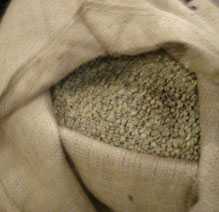FLAVORINGS-RELATED LUNG DISEASE


Coffee Processing Facilities
Workplace Interventions
Medical Surveillance
The purpose of a medical surveillance program is to help assure the health of employees who have workplace exposures (e.g., diacetyl and 2,3-pentanedione) to health hazards known to pose risk for potentially serious health conditions or illnesses (e.g., obliterative bronchiolitis).
- If workplace air levels of diacetyl and 2,3-pentanedione are elevated above NIOSH RELS, we recommend a medical surveillance program that includes a health questionnaire and spirometry (NIOSH 2011b, 2011c, 2012b; 2013) be initiated to screen for respiratory symptoms or respiratory abnormalities in employees. Sometimes workers with obliterative bronchiolitis are initially misdiagnosed with asthma, chronic bronchitis, emphysema, or pneumonia; or their symptoms are attributed to smoking. It is important to consider the possibility of flavoring chemical-related lung disease in workers who have been exposed to diacetyl or similar flavoring chemicals (such as 2,3-pentanedione) and have respiratory symptoms. In cases of flavoring chemical-related lung disease, respiratory symptoms do not typically improve when the worker goes home at the end of the workday, on weekends, or on vacations. The symptoms often have a gradual onset but can occur suddenly.
- These medical results can serve as a baseline for any future evaluations. Serial spirometry and questionnaires can be used to ascertain whether there is any indication of excessive declines in lung function that might predict which workers may be developing impairment.
- Page last reviewed: January 27, 2016
- Page last updated: February 9, 2017
- Content source:
- National Institute for Occupational Safety and Health Respiratory Health Division


 ShareCompartir
ShareCompartir